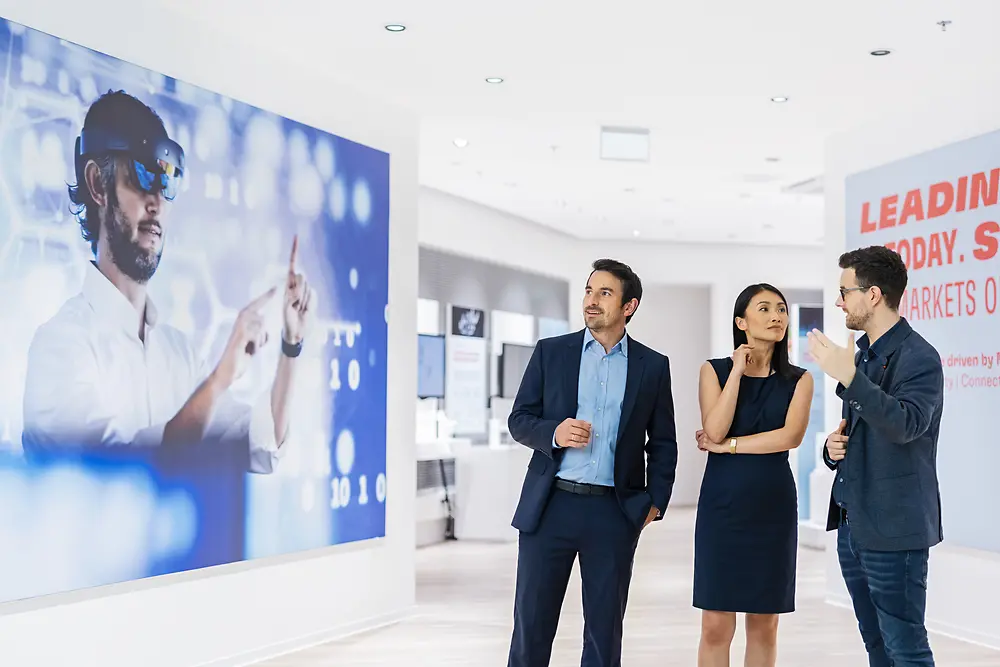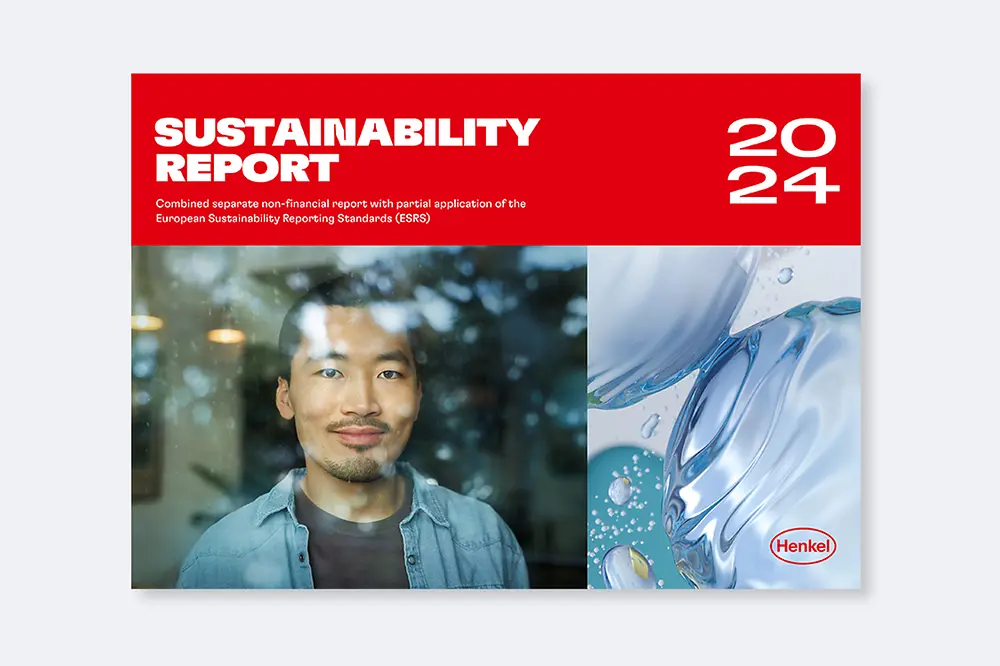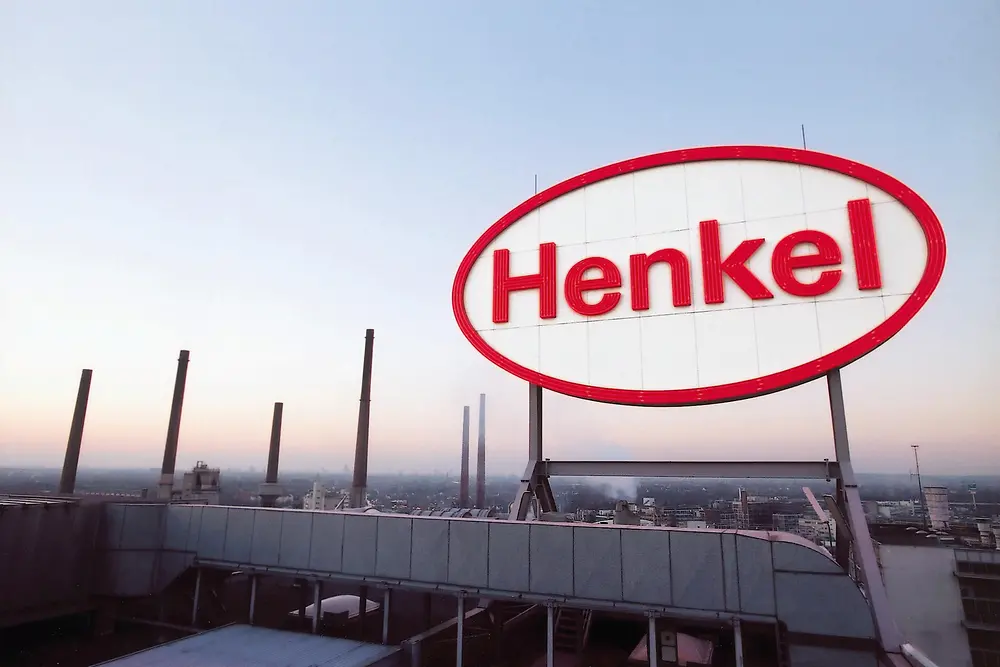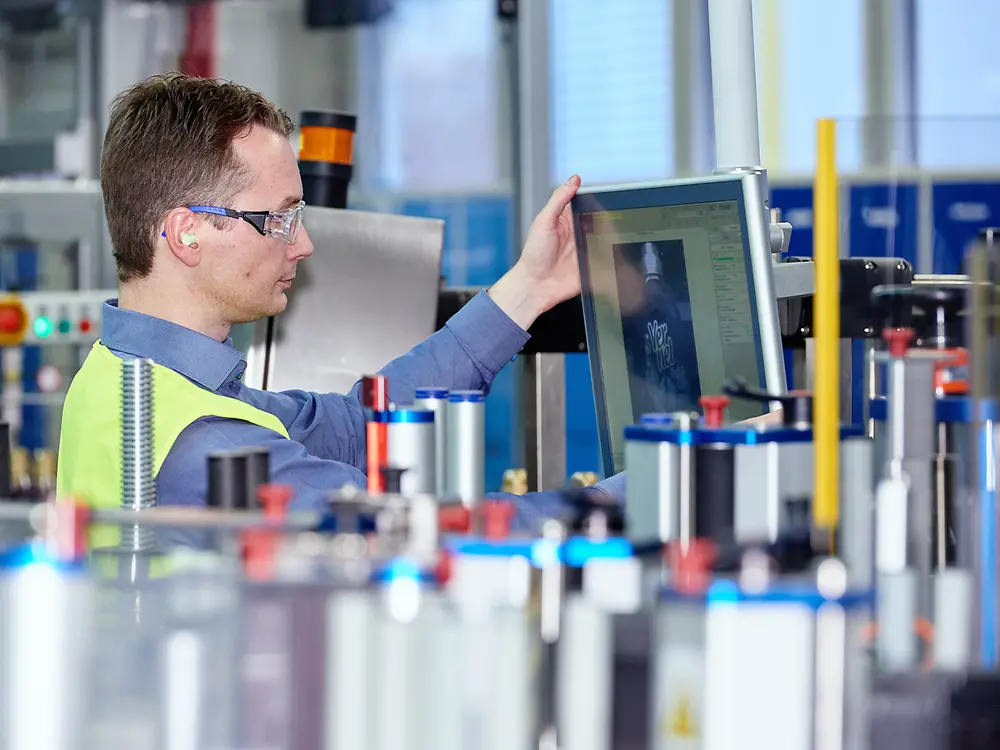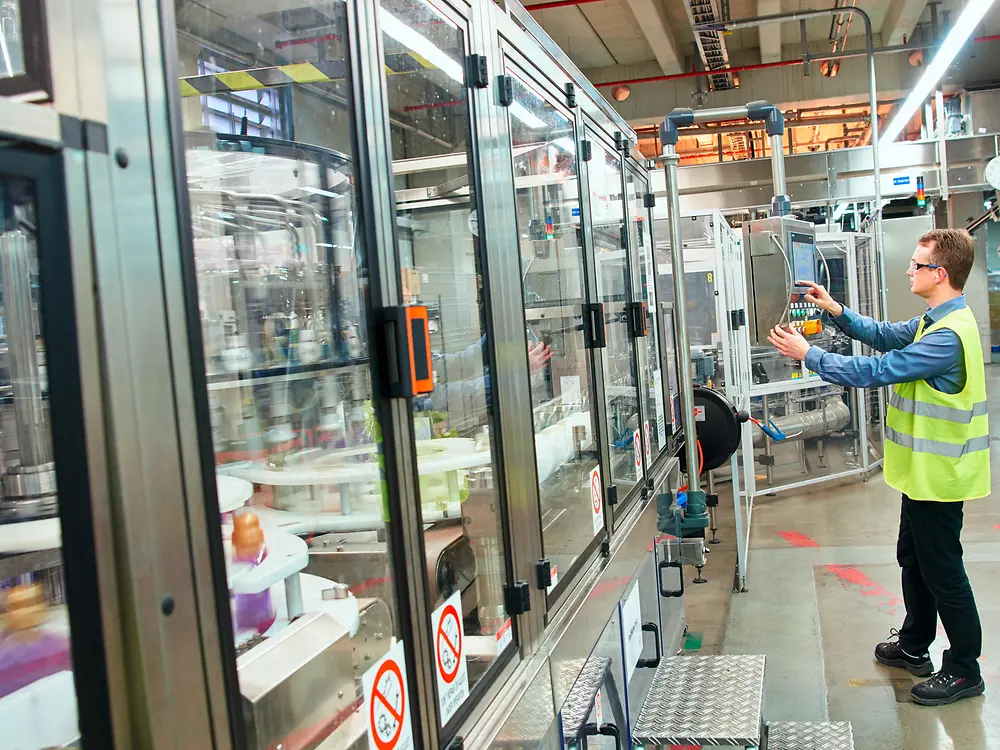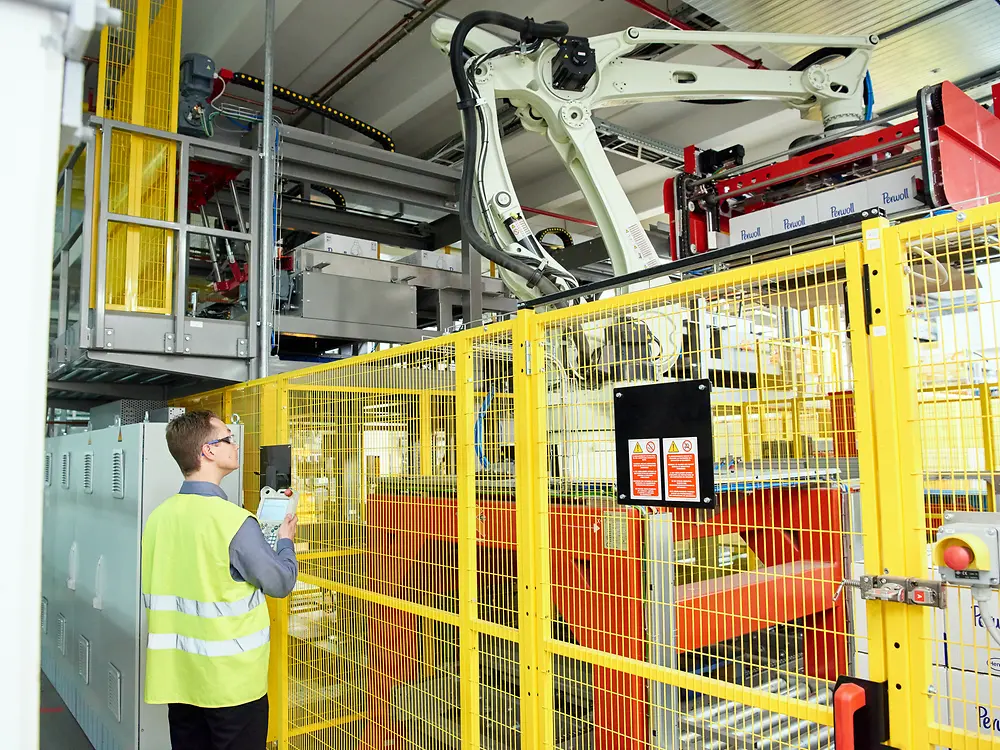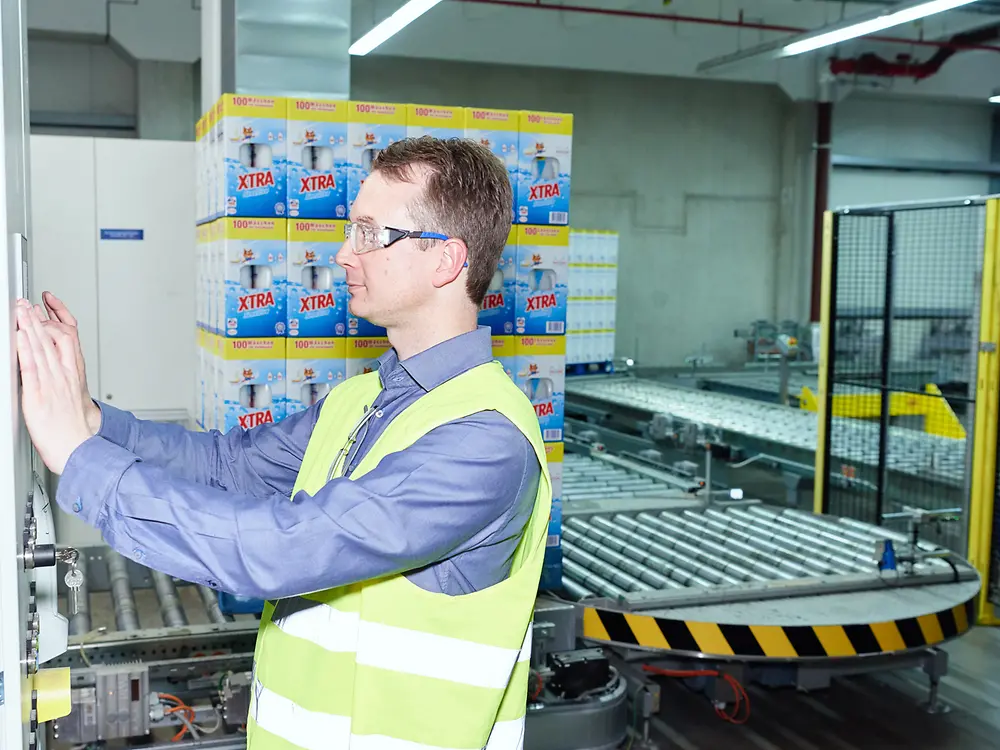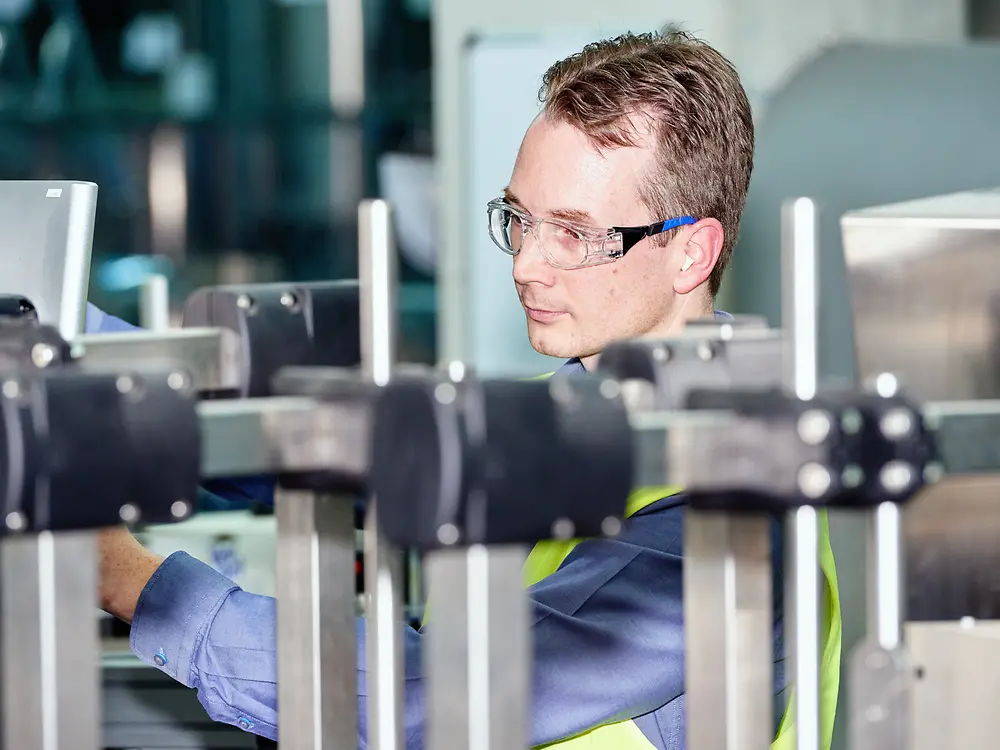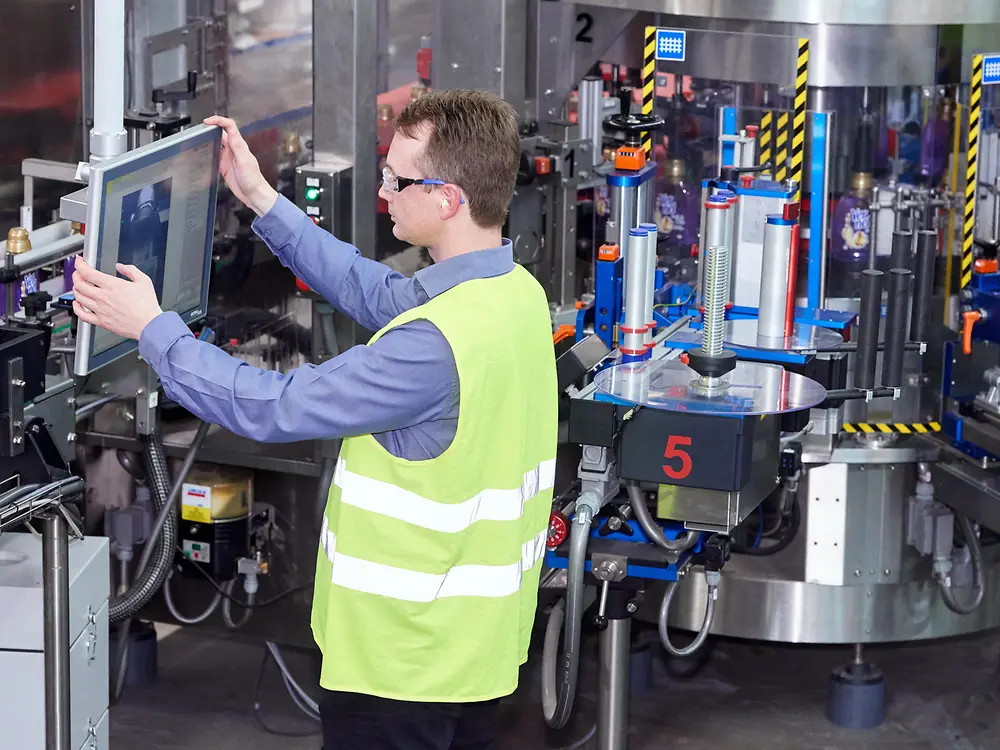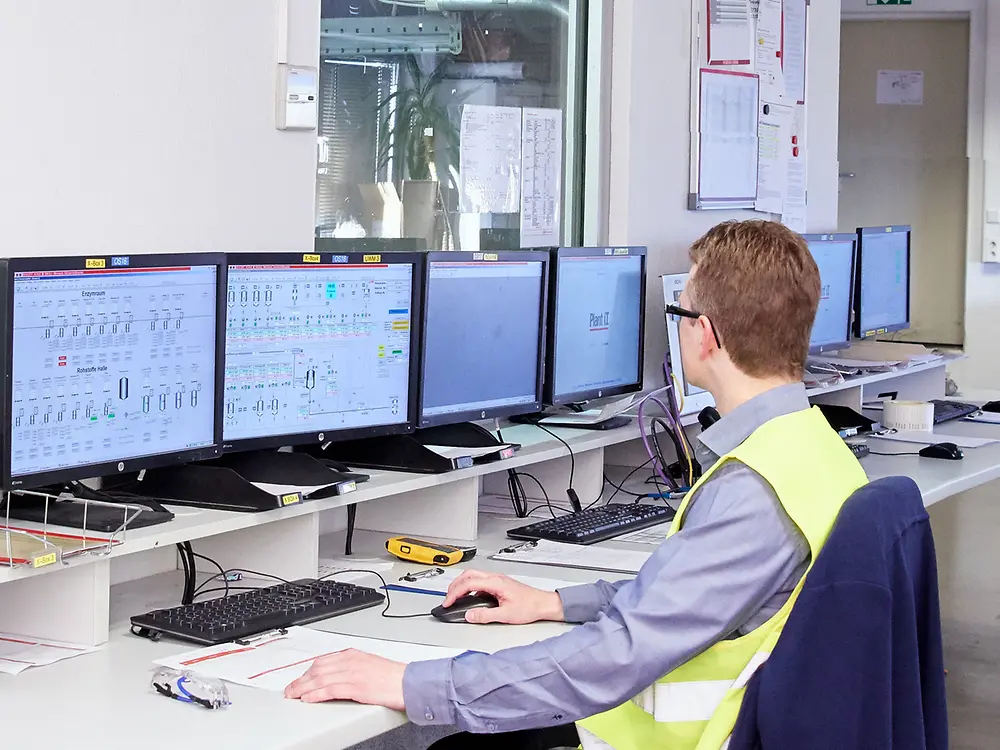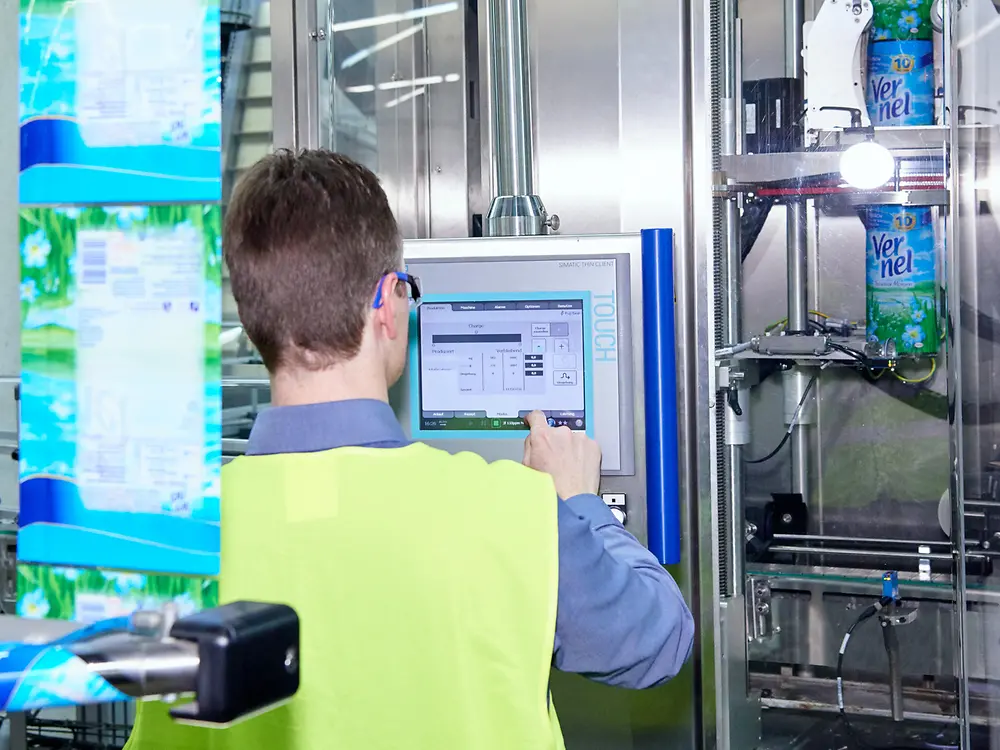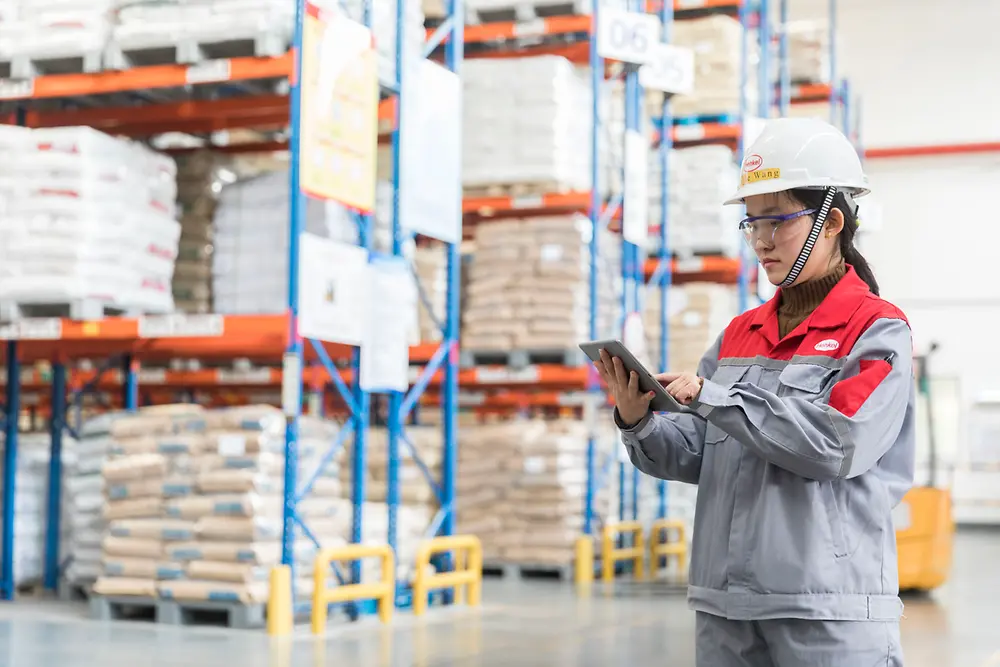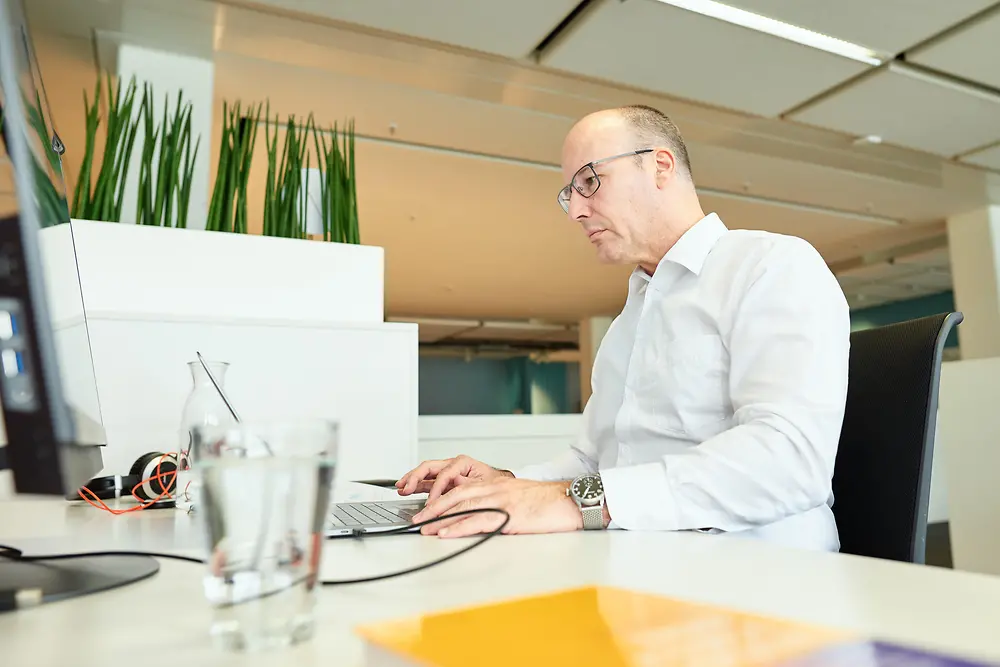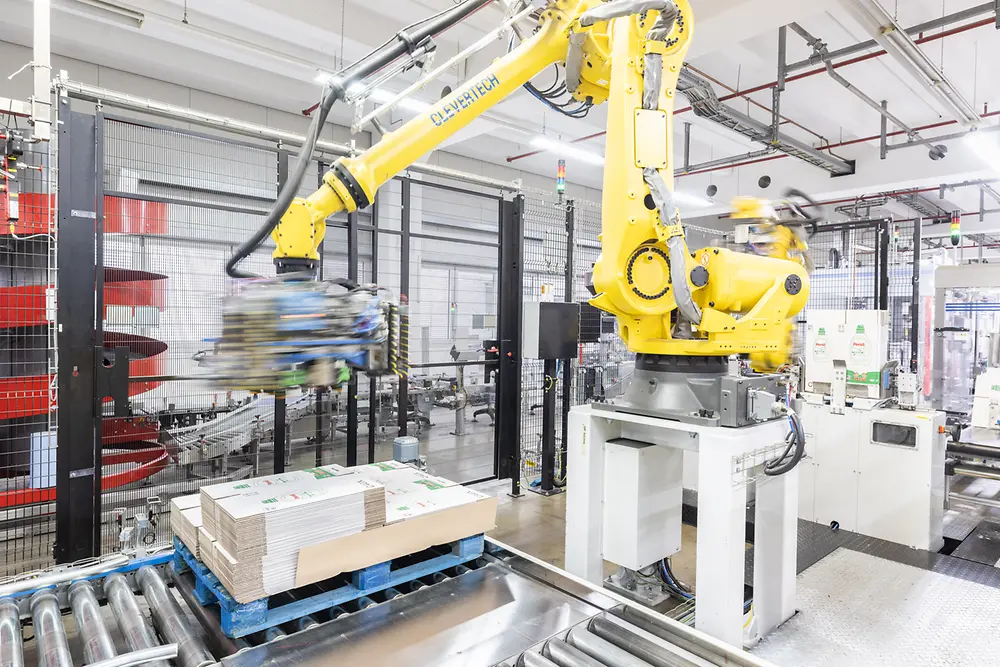Dirk Holbach and his team in Amsterdam decide which ideas Henkel should pursue and implement as pilot projects. Supply chain experts from the company’s three business units come together to share ideas there and develop the corporate agenda for industry 4.0 with colleagues from IT and Finance. “We get better results more quickly with local tests on a small scale. When something doesn’t work, we can react immediately,” says Holbach. Laundry & Home Care is currently leading more than 20 of these trials at 10 different locations, each of which is being implemented in under 12 months. The motto for these agile processes is, “Try small, fail small, scale up fast.”
Henkel has defined focus topics for the rollout of industry 4.0, which are carried across all business units by the team in Amsterdam. New approaches for demand planning and forecasting are just one of many examples, and will allow the company to predict and plan for future needs even more effectively going forward. Indeed, combining artificial intelligence with big data makes it possible to predict where customers and consumers will display increased demand for which products in the future.
Whenever a technology has proven useful and is due to be rolled out to other locations, Nover is informed. Ever since Henkel centralized its planning for the global supply chains in Amsterdam, there’s always a lot to discuss. Nover coordinates with his colleagues in the Netherlands and around the world several times a week. The system improves transparency: When Nover observes that his production line’s energy needs rise above the average values, for example, he compares the data with that of other locations. “Then I enquire with colleagues who have had similar experiences, so we can solve the problem together,” he says. “And when a new technology that has proven valuable at our site is due to be deployed at another location, I’m happy to provide guidance, of course.”
